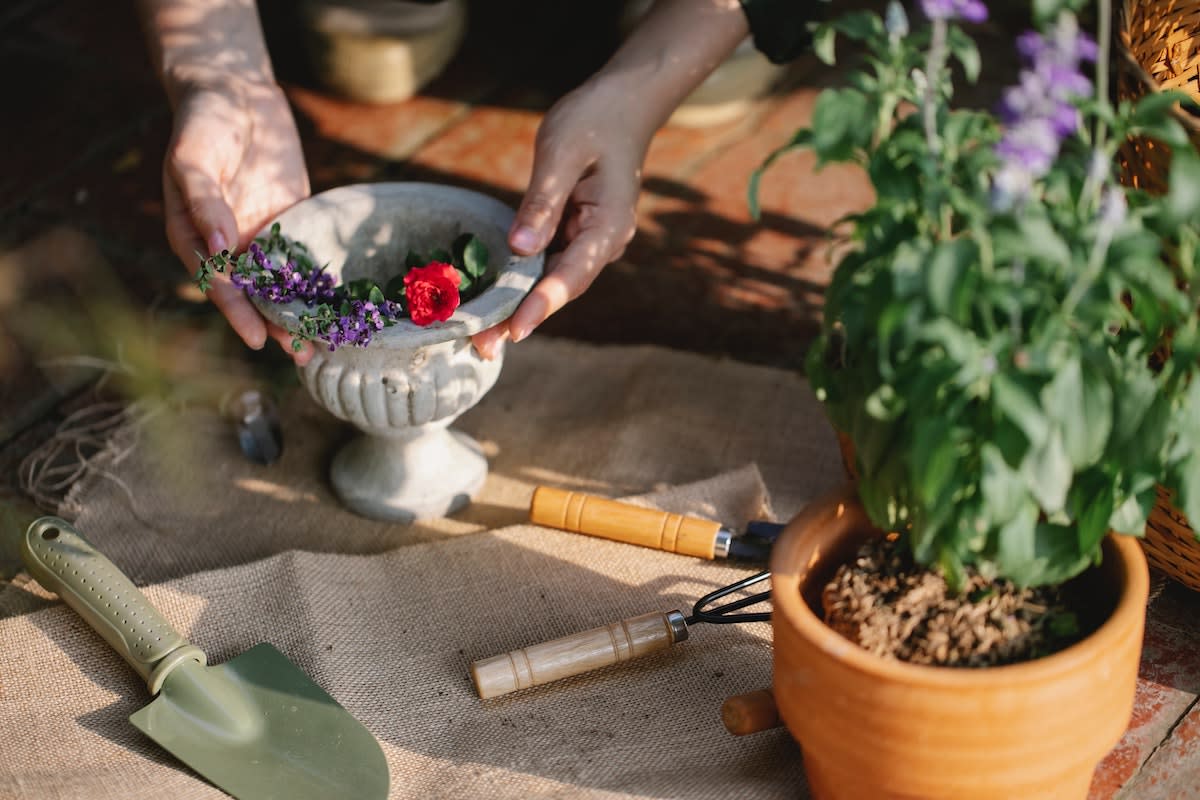How to Divide Plants: 3 Tips For Dividing Plants and Flowers
Written by MasterClass
Last updated: Jun 7, 2021 • 3 min read
Dividing is an effective way to propagate more plants in your garden without having to plant a seed.
Learn From the Best
What Is Plant Division?
Plant division is a method of producing new plants by removing a portion of a parent plant that has its own roots, and replanting the new section to grow elsewhere. The roots of the original plant allow the new plant to begin absorbing water and nutrients immediately. Dividing plants can reduce overcrowding, and prevent your plants from competing for resources in your garden.
What Plants Can You Divide?
Plant division only works with the type of plants that grow in clumps, which includes many (but not all) perennial plants. Below are a few different types of plants that can be divided:
- Perennial flowers: Clump-forming plants produce numerous stems from a broad mass of roots, making them good candidates for division. Some examples of clumping flowers include daylilies, geraniums, garden phlox, coral bells, and penstemon, also known as “beardtongues.”
- Bulbs and tubers: Bulbs and tubers grow closely together, and dividing them can keep them healthy. Tubers that may benefit from division include dahlias, hosta, garlic, and saffron.
- Succulents: Many succulents also grow as clumps, and the small offspring growing around the central mother plant—called pups—can be removed for propagation. Succulents that can be divided include sedum, also known as stonecrops, aloe, and a variety of cacti.
- Trees and shrubs: Some trees and shrubs produce suckers—stems that emerge from the root system away from the original trunk—which can also be transplanted.
When to Divide Your Plants
Perennials are generally divided every few years, depending on how well they grow. Spring-blooming plants are best divided in the early fall, while fall-blooming plants are best divided in the early spring. Here are some of the best seasons to divide particular plants.
- Fall divisions: Plants with fleshy roots and rhizomes do well when split in the fall. More of these plants include onions, peonies, Siberian iris, bleeding heart, and lily-of-the-valley.
- Spring divisions: Many ornamental grasses and flowering plants like asters, bee balm, primroses, and yarrow are more suited for dividing in the spring.
- Fall and spring: Some plants are resilient enough to be divided in either fall or spring. These plants include coneflowers, blanket flowers, and black-eyed Susans.
How to Divide Plants
Dividing plants—especially perennials—is an easy way to keep your garden fresh and healthy. While some plants may require specific instruction depending on their root systems, there is a general method of creating new divisions from your plants.
- 1. Remove the parent plant. Use a sterilized garden fork or spade to gently dig up the plant you want to divide. Lift the plant from its hole, and remove any dirt from the roots. You can cut out the whole clump, or you can loosen the soil and only remove a smaller piece.
- 2. Separate the plant into smaller sections. How you separate the pieces of the plant depends on the type of plant you’re dividing. For example, you should cut dahlia tubers through the center clump with a scissor or sharp knife, and then remove their stems partially. Plants with root balls can be teased apart with your fingers. Your divisions should have a couple of viable shoots and roots.
- 3. Store or replant the divisions. You can plant your new divisions right away, or you can store them in a shaded and moist area until they’re ready for replanting. When transplanting back into the soil, be sure not to bury the new plant deeper than it originally grew.
Learn More
Grow your own garden with Ron Finley, the self-described "Gangster Gardener." Get the MasterClass Annual Membership and learn how to cultivate fresh herbs and vegetables, keep your house plants alive, and use compost to make your community—and the world—a better place.
